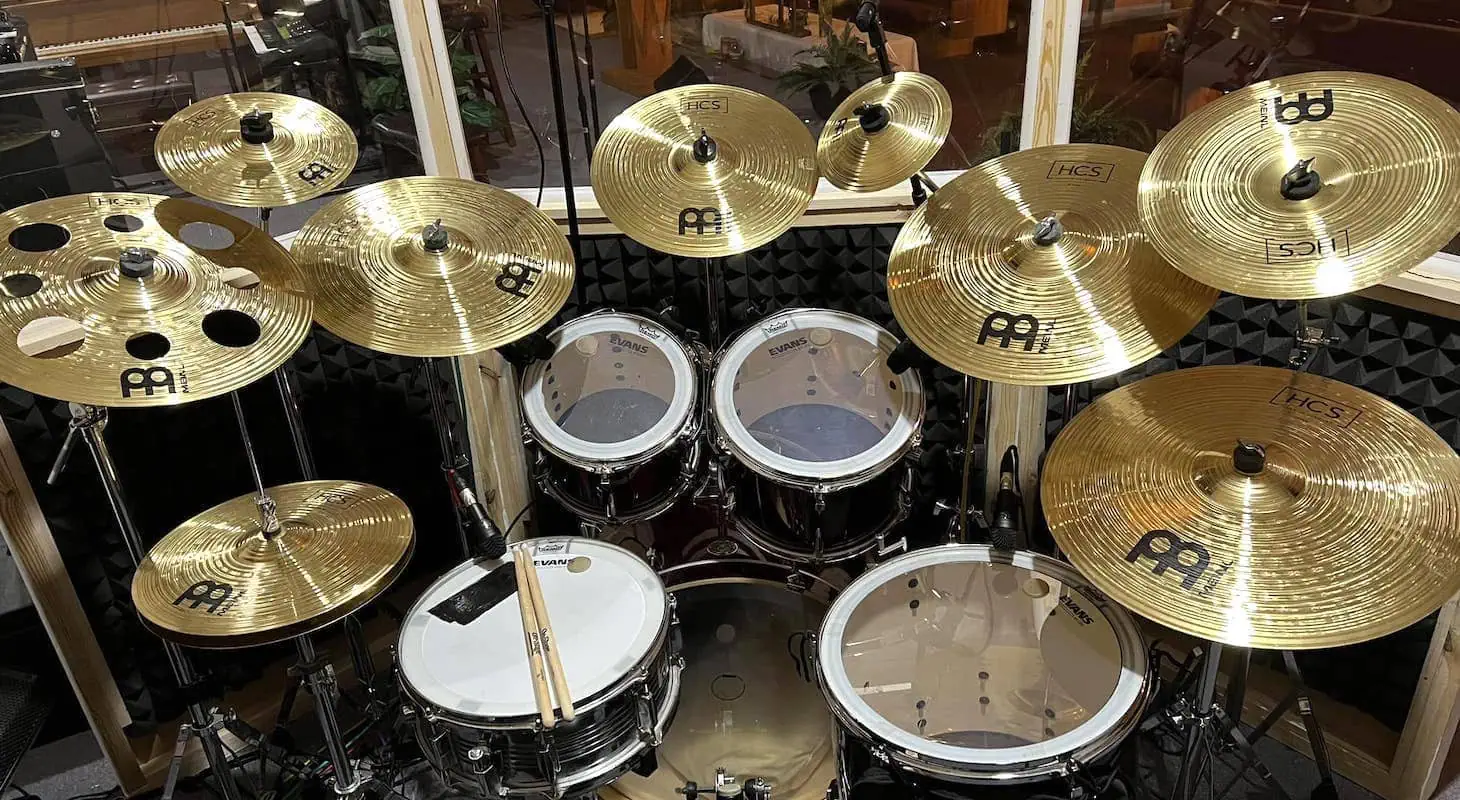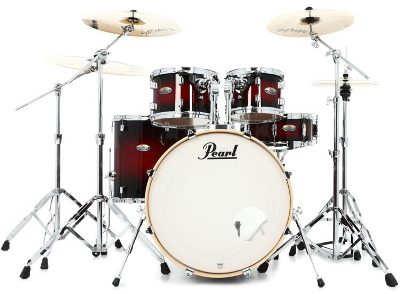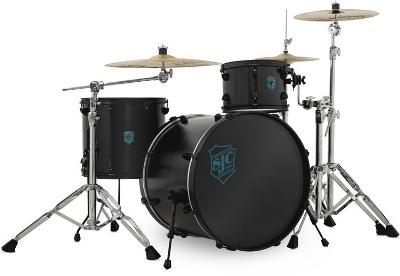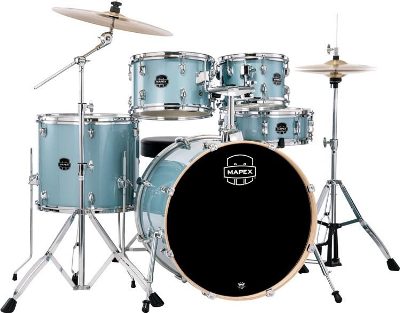When playing the drums in a church setting, you can expect to thoroughly use the entirety of the drum kit. While some folks may have a tendency to place all religious music in a single category, it actually spans multiple genres, feels, and tempos.
Church drummers need a kit that is versatile, expressive, durable, and able to keep up with the rotation of music heard in the church setting.
When considering the number of different configurations, styles, and sound qualities available, picking the right drum set for your church worship team can get tricky real fast.
I've played in churches for a considerable amount of time, and some of the kits I played definitely impressed me much more than the others for a worship use case.
Top 3 - Church Drum Sets
Preview | Product | Price |
|---|---|---|
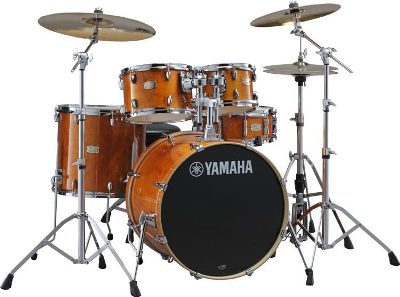 | ||
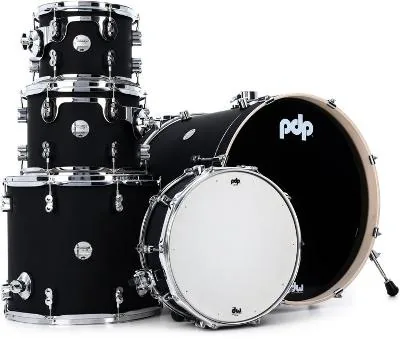 | ||
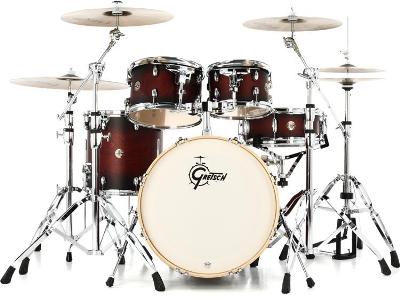 |
Let’s take a look at six drum kits that would be a heavenly sight to the gospel drummers of the world.
Best Drum Kits for Church / Worship Music
Table of Contents
1. Yamaha Stage Custom Birch
If you’ve ever played a venue or church with a backline kit before, chances are it was one of these Stage Custom Birch kits from Yamaha.
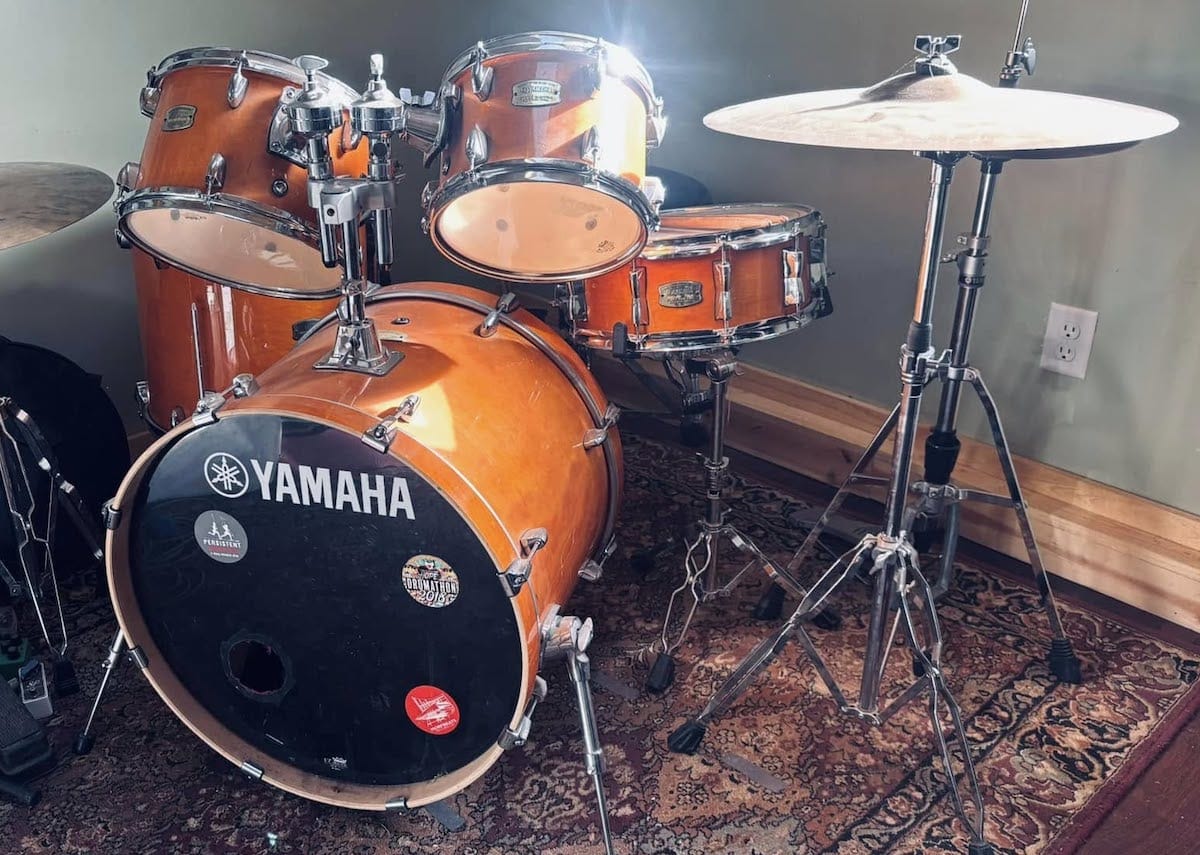
Yamaha Stage Custom Birch Kit
Yamaha’s Stage Custom Birch Shell Pack is a popular choice for drummers who particularly enjoy a bright tone with a strong attack and an ability to project.
The birch shell's ability to project is especially important when playing to a room with a larger audience or when accompanying a larger group of musicians on stage as it can help you really cut through the mix.
This five-piece pack includes a 17” x 22” kick drum, a 5.5” x 14” snare drum, two rack toms measuring 7” x 10” and 8” x 12”, and lastly a 15” x 16” floor tom.
The snare has a delightful pop that contrasts nicely against the highly punchy kick drum. Though I would recommend changing out that snare head for a better one, as the one that comes with it does give off that weird basketball-bouncing-sounding tone with the stock head.
The rack toms sound so good when tuned up even a little together than I normally would. The attack and response are just amazing! The floor tom is beautifully low as well and a lot of fun performing some rising rolls on.
Yamaha has equipped the hardware in this shell pack with their low-mass lugs. Yamaha claims these lugs allow the shells to vibrate freely for better sustain.
This has always been one of the reasons I've chosen Yamaha for my church and performance gigs. They're incredibly reliable, and proper tuning is essential for achieving a great church drum sound — this can't be overstated.
When playing at church with a large choir or several vocalists, a well-tuned drum kit helps maintain balanced sound for the front-of-house engineer.
Venue size is another crucial factor. In mega-churches with pop or rock-oriented bands, I use Evans clear heads for precise sound. For gospel or traditional church settings, I prefer Remo Ambassador coated heads for their warmth and softer touch.
Consider keeping diverse percussion tools — sticks, mallets, and rods — for songs requiring softer dynamics. I rely on Vic Firth Corpsmaster mallets and Rute 606 rods when I need a lighter touch.
That's what makes Yamaha drums special — they're not just reliable but incredibly versatile. Their balanced sound is perfect for church acoustics, which often come with significant natural reverb.
The quality for the price is good enough to make me a believer!
2. PDP Concept Maple
PDP’s Concept Maple series should be familiar to most drummers as it has become a popular choice due to its quality and friendly price point. It certainly helps that they utilize much of their parent company, DW, hardware components within the PDP line of drums.

PDP Concept Maple Kit
In this 5-piece shell pack you get a boomy modern sounding 18” x 22” kick drum. You also get a 5.5” x 14” snare, 8” x 10” and 9” x 12” rack toms, and a 14” x 16” floor tom.
This kit from PDP produces a decent overall sound right from the box. I would however suggest changing out the heads to something double-ply for greater tuning ability.
The maple shells create a warm and well-balanced sound that is nicely suited for the gospel, worship, and even contemporary Christian music as well.
This drum kit is particularly well-suited for smaller churches, thanks to its controlled response. It's especially ideal for playing with mallets during slower, more contemplative worship songs.
Last year, a small Los Angeles congregation hired me to consult on their band equipment upgrade. The space was a modern circular building with an acoustic challenge: polished marble walls combined with carpeted floors — quite the tricky combination.
It was fascinating to test instruments I'd primarily used in larger spaces within this intimate setting.
Instruments respond differently to the spaces they're placed in. While this might seem obvious, the impact of acoustics on drums and microphones is truly remarkable.
For example, I've typically recommended versatile power kits like Yamaha or Pearl for houses of worship. However, I was surprised to discover that in a church with circular walls, these punchy kits created overwhelming echoes and reflections.
I'd assumed carpeting would sufficiently dampen the echo — after all, if churches with marble floors can manage, surely carpet would work better. While it did help with the kick drum, the other drums still cut through too aggressively.
That's where the PDP shines, especially with coated drum heads by Remo. Something like the Remo Emperor heads will beautifully tame your snare and toms while maintaining that modern punch. Add mallets, and you've got complete control over your sound.
For playing upbeat music with sticks, I recommend using heavy electrical tape on the snare. Like all DW kits, the PDP kit responds well to manual dampening.
This kit proved to be the perfect match for this particular church. The congregation was thrilled with the upgrade from their older Pearl kit, and the modern look certainly enhanced the stage's appearance.
The rack toms are clear and articulate sounding even with the stock heads. Again, changing the heads will only serve to make them sound even better.
While the snare drum could use a head change, I enjoyed playing the rim when using a cross-sticking technique. An application that I can see being heavily in more subtle music.
It’s worth noting that the snare also features a genuine DW MAG throw snare drum throw-off as well. A great piece of hardware that makes adjusting the snare tension much less time-consuming.
You will love the sturdy DW-inspired hardware as well. The smaller lugs give the kit a more modern, sleek look that really shines.
3. Gretsch Drums Catalina Maple
Gospel drummers who desire vibrant bright tones should consider the Gretsch Catalina Maple kit.
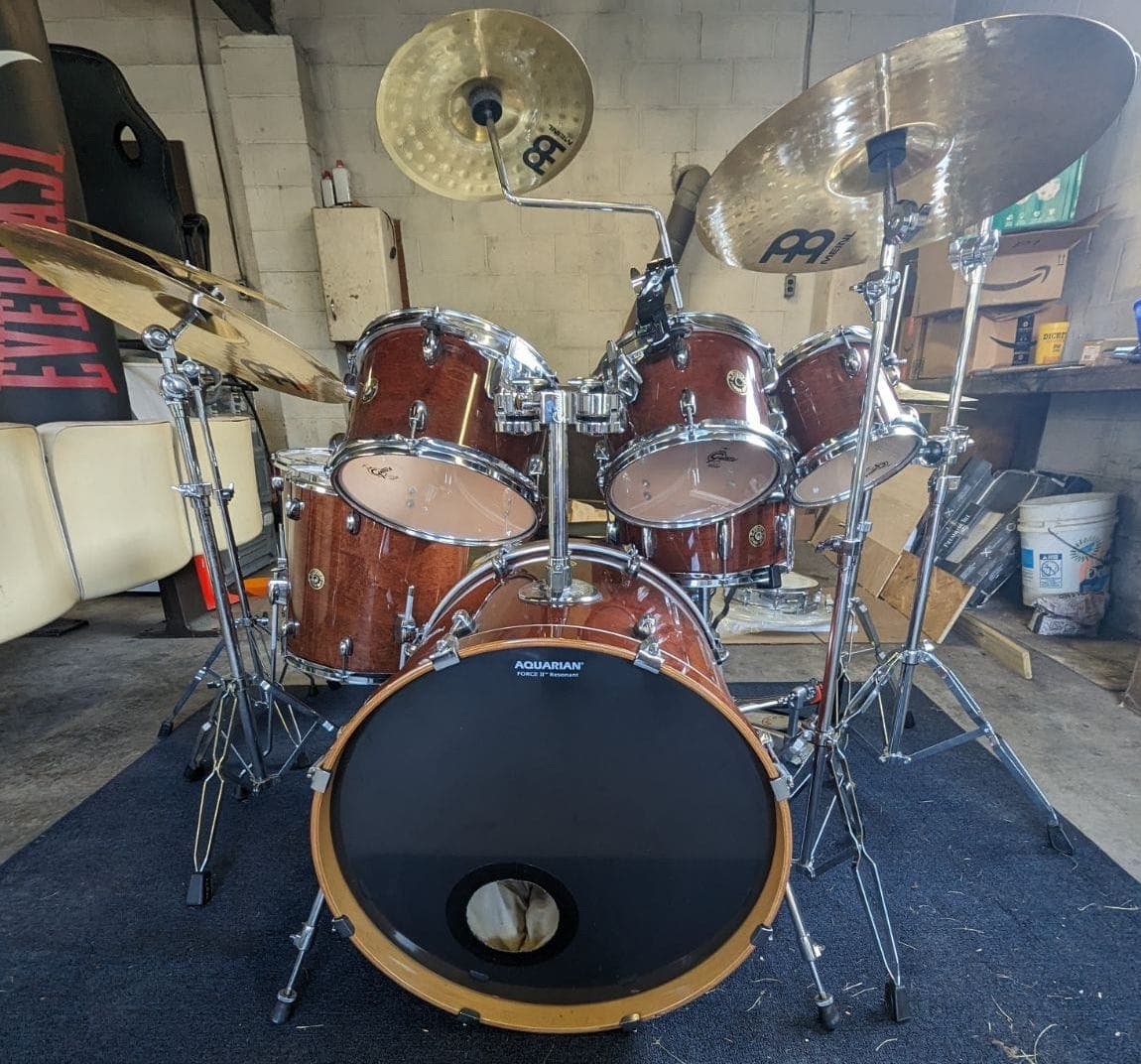
Gretsch Catalina Maple kit.
The Catalina would be great for a drummer who wants to keep a smaller footprint on the stage without sacrificing sound within the overall mix.
With this 5-piece shell pack you get a 16" x 20" bass drum, 7" x 10" rack tom, 8" x 12" rack tom 14" x 14" floor tom, and a 5.5" x 14" snare drum.
The shell sizes of Gretsch Catalina Maple are adequate for a drummer who desires their kit to be more compact and portable. While most Churches have a house kit, it is nice to have something that is easier to move around should the occasion call for you to do so.
I was happy to learn that these maple shells are crafted using Gretsch’s popular 30-degree bearing edge cut. A desirable choice for drummers who prefer their toms and snare to have a strong attack and sustain that can help cut through a mix and provide clarity in their live performance.
The tone that resonates from these shells is well-balanced and warm.
Gretsch has always been my choice for a vintage-style kit, which I mainly use for funk, pop, and urban music. The kit's versatility comes from how you tune it and the heads you choose for the toms and snares.
Gospel music is perfect for a Gretsch kit because it draws from blues, R&B, and funk/soul roots that have shaped today's urban music. It pairs especially well with a live bass player.
Many church bands feature live bass players. While some use a pianist or keyboardist with an arranger keyboard that doubles as bass, most gospel settings and megachurch concerts I've played include both a drummer and a live bassist.
The Gretsch excels in live rhythm sections thanks to its kick drum — incredibly powerful and deep, not like a Pearl or DW kick, but more jazz-styled. This is why tuning matters so much for church gigs. While boomy, big kicks are great for recording because of the control you have, live settings with a bassist demand a tighter sound.
The Gretsch Catalina is my top pick for these situations. Paired with Remo heads and slight dampening, it strikes the perfect balance of depth and punch without overpowering the vocals.
I regularly record Gretsch kits in my studio and own a Catalina myself, which I recently played at an Easter concert at my Los Angeles church. My best upgrade was switching to a tighter, slightly smaller Renown series snare.
Gretsch, like Ludwig, caters to jazz drummers with their immensely powerful, deep-sounding snares. While these are excellent for brushwork and stick playing generally, they can be too cutting for church acoustics.
My Los Angeles church presents unique challenges with its high ceilings, and it still has an organ!
You get unavoidable ceiling reflections plus gallery reflections where the pipe organ sits. Though I know the space well and helped choose their gear, my old Gretsch snare remained untamable until I switched to the Renown.
In Christian and church music, we play many rimshots, and this rim is among the best I've ever heard. It's perfectly balanced, not too bright, and projects well even without microphones. The snare itself offers vintage character with modern resonance control — great-sounding but gentler than the Catalina's stock snare.
For those seeking an even softer option, I love the new Gretsch Birch snare with triple-flange hoops, offering incredible dynamics for softer playing. I tested it at January's 2025 NAMM show and was impressed. Keep an eye out for this birch snare if you're considering a Gretsch kit.
Mixing wood types between your toms and snare can be beneficial. This birch snare features Tilco brass wires — among the most versatile snare wires for any genre, particularly when playing softly.
Like most Gretsch kits, the Catalina maintains its tuning reliably, even through frequent gigging.
I have to note that the Satin Deep Cherry finish on the shells is really a beautiful color. The finish helps the drums stand out without affecting the tone of the shells and that is really important.
4. Pearl Decade Maple
Pearl’s Decade Maple 5-piece kit comes with an 18” x 22” kick drum, a 16” x 16” floor tom, a 5.5” x 14” snare drum, and two rack toms measuring 7” x 10” and 8” x 12”.
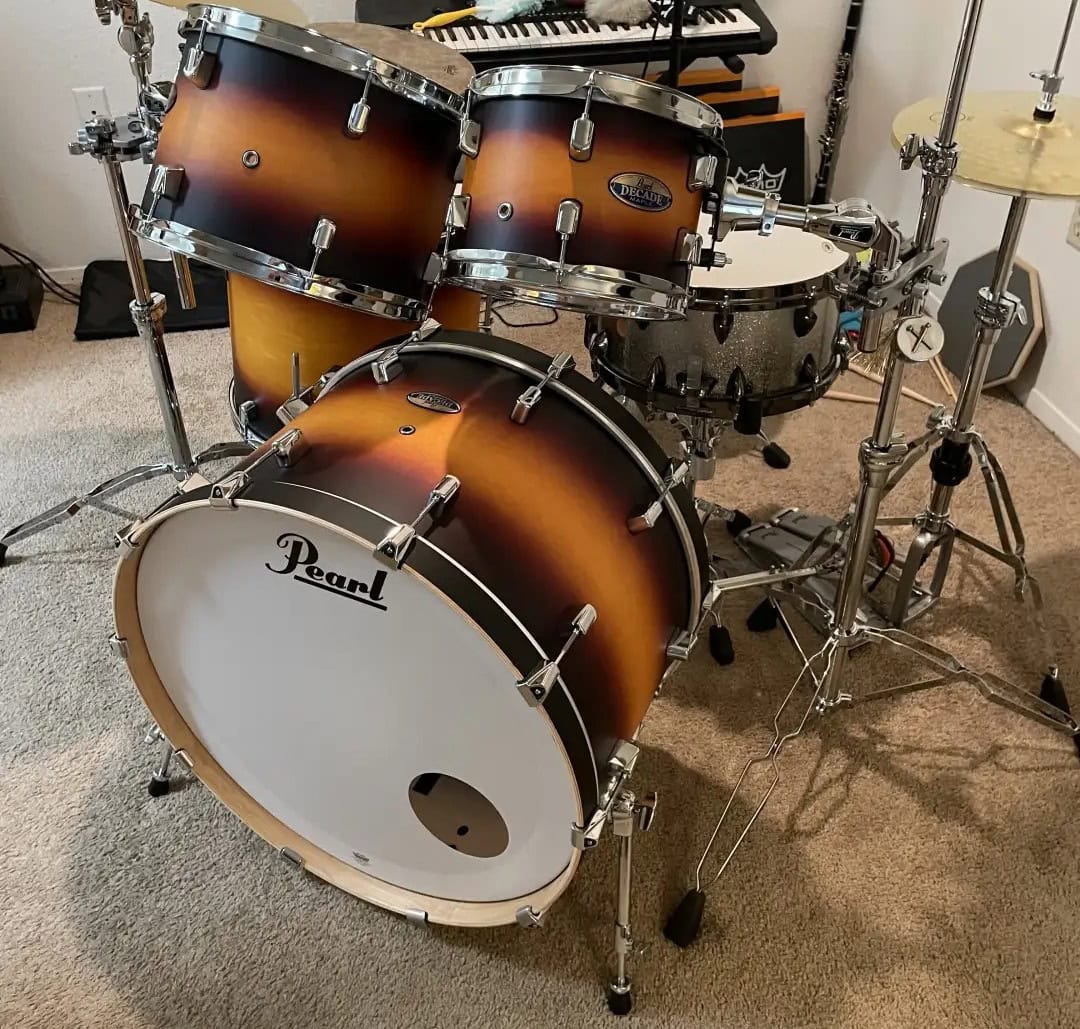
Pearl Decade Maple kit.
Pearl does something that I think is pretty great with their Decade Maple kits. Pearl utilizes a slightly thinner ply of Maple in order to get more resonance from their shells.
Pearl uses a 5.4mm thick ply for their tom shells, while the snare drum and bass drum feature 6-ply 5.4mm and 7-ply 7.2mm maple shells, respectively. For comparison sake, other manufacturers typically make thicker shells, such as 6-ply or 7-ply shells that are constructed from 6mm or greater ply of maple wood.
The product of the thinner-shelled drums is a more responsive drum with greater resonance, providing a warm and very natural-sounding tone. These are also quite easy to tune, and the tuning stability is commendable as well.
As Pearl players have come to expect, these shells are of course made with that familiar Super Shell Technology in which Pearl takes great pride.
Because of the SST build process, Pearl has become known for producing high-quality drums that are durable and reliable. This can be important for Church or Gospel music, where a drum kit is often used frequently within a variety of settings that include rehearsals, performances, and recording sessions.
Having durable shells that can endure thousands of hours of playtime without going out of tune is of the utmost importance, especially when it comes to times of worship.
This is a powerful beast of a drum set for Christian pop music. I've used this kit for mini gigs with Nashville artists who come to town with their incredible guitar players and are looking to hire local drummers to complete their band.
Since I'm the musical director of my church, I have had the fortune to gig with many of them.
If you've heard modern Christian acts, you'll know they're on par with powerful country artists — not just in audience size, but in how they sell out megachurches and stadium tours. Their music is rock-infused and demands professional-grade sound.
Pearl is always my go-to for this style because it's one of the most iconic rock brands, played by some of my favorite rock drummers like Mike Mangini of Dream Theater fame and Ray Luzier of Korn. If you know these bands' music, you know these guys hit hard and fast.
Since many renowned Christian rock groups demand this level of performance, this Pearl maple kit will deliver in spades.
You don't need to switch out the heads on this kit because Pearl ships with heavy rock players in mind when choosing their factory heads. However, consider using clear Evans heads if they don't come standard.
The manufacturer sometimes changes heads year to year — the last Pearl Decade Maple I tried came with Remo UT heads from the factory, which are great, especially the Powerstroke 3 on the kick.
Consider switching to Evans G2 clear heads for your snare and toms. Rock music requires hard hitting for extended periods, which can affect tuning stability. Evans heads are the industry standard for staying in tune.
That said, your choice depends on the setting, venue, and artist you're performing with. Try testing different heads during church sound checks to see how they perform. If you frequently play at different churches, Evans heads are especially worth considering for their reliable tuning.
Personally, I've owned this kit for a long time now, since back when I wasn't even too confident on my own drumming abilities. I just wanted a kit that I wouldn't be able to outgrow anytime soon. My overall sentiment about it after this long-term ownership is overwhelmingly positive.
5. SJC Custom Drums Pathfinder
For drummers who prefer a more modern, minimalist drum kit, the SJC Custom Pathfinder 3-piece pack is a great option. The Pathfinder’s natural wood finish is simple and understated. It would fit nicely into most worship spaces, but if you want to stand out with a pop of color there is a teal finish option available that looks great!
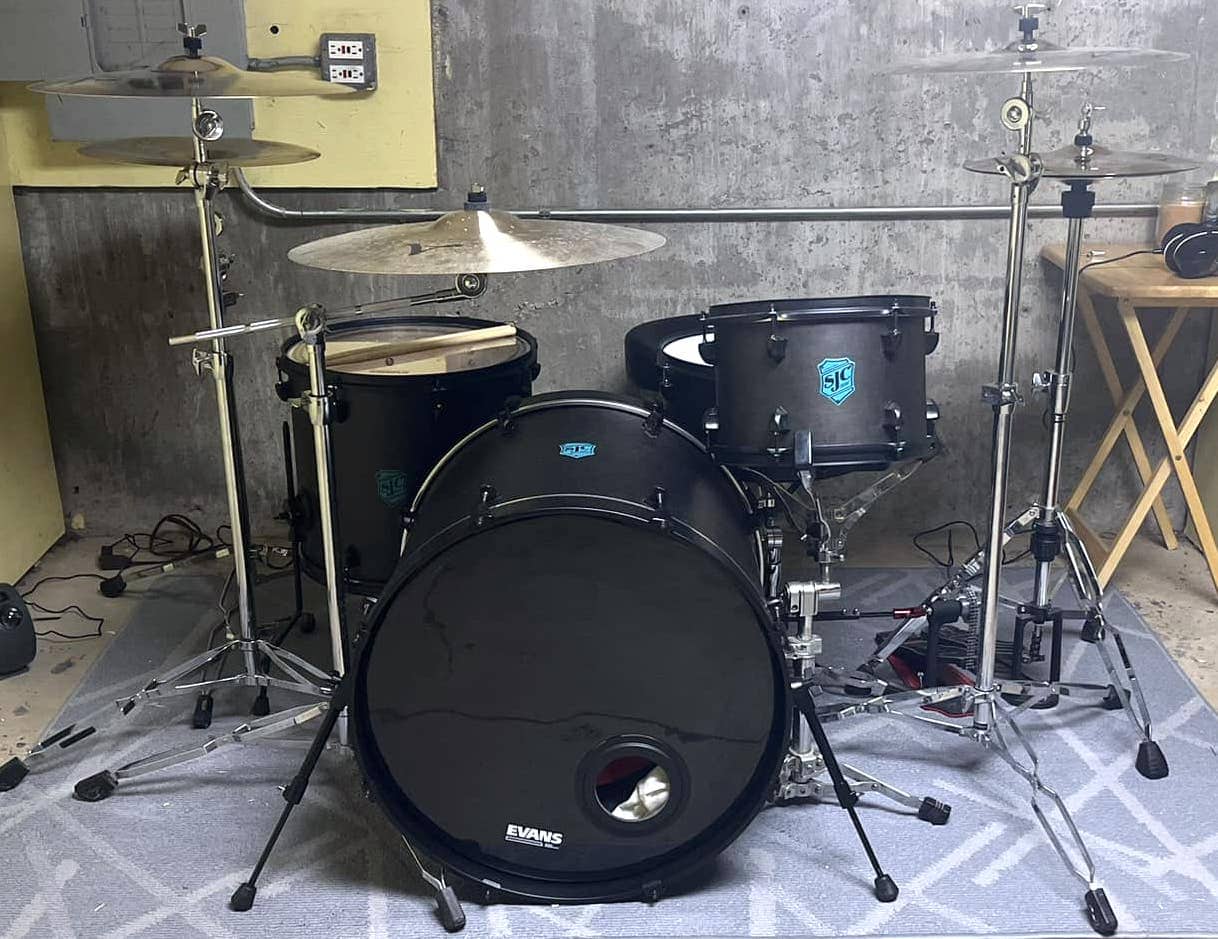
SJC Pathfinder kit.
Constructed from a blend of maple and mahogany, this 3-piece kit comes with an 18” x 22” kick drum, an 8” x 12” rack tom, and a 14” x 16” floor tom. There is no snare drum included here in this pack, but you can acquire a matching 6.5” x 14” snare drum separately to complete the kit.
The hardware is a beautifully dark flat black color. A great choice if you aren’t a fan of the fingerprints that tend to accumulate on chrome hardware.
The Pathfinder series has an ultra-punchy quality that carries over across all three components. I’d attribute this to the mahogany wood layered in between the maple. That mahogany really brings that lower tone out in spades.
I can see the Pathfinder kit’s sound working well for more contemporary styles of worship and gospel music.
The bass drum is one favorite aspect of this kit for me. Even without any muffling, it offers a good amount of thump and response, but without any of the unwanted ringing overtones.
These SJC kits have an innovative approach, using thick, well-designed seven-ply shell packs to achieve a great tone. Sonically, they remind me of a combination between Yamaha and Ludwig drums.
They have that vintage warm, tight natural thump, plus the warm low-mids characteristic of Ludwig kits. The best way to describe them is "retro-modern," as they excel at modern playing styles.
These drums are amazing for church gigs because they sound pre-mixed. I know that's an unusual statement, but they sound perfectly balanced even without mics on them.
While I've never had one in a recording studio, I played this particular kit at a smaller congregation and was blown away by how perfect it sounded without EQ or compression from the house mixer. I didn't know much about the brand or their shell construction — which contributes to the big sound — until I looked up the specs after loving it at that gig.
As a lover and fan of Christian music, I've noticed how the genre has evolved with strong influences from pop and electronic music. There's a Nashville label called Centricity with such a diverse roster that their artists could easily fit on Warner Records or Capitol. One of their biggest artists, Lauren Daigle, rivals Taylor Swift in terms of polished pop sound.
There are even electronic acts on the label — believe it or not. The days of church gigs featuring old worship songs from the bench songbook are long gone. Big church bands now sound more like A-list wedding and concert bands rather than Sunday church volunteers.
If you're reading this article, you're probably already in the scene or trying to break into live church music. It's crucial to be versatile and modern since you'll encounter many pop charts during rehearsals and auditions for church bands, especially the well-paying ones.
The SJC might be perfect if you're aiming for that Nashville pop/country/Christian modern sound you'd hear on Centricity. It's also valuable to have a kit that works well both live and in the studio, and this one would be a gem to record with, based on my live experience.
Many larger churches are now selling their music or at least investing in track production. The music you play at church gets professionally produced and distributed, making it a viable path not just for making a living, but for building your reputation and growing a following.
While the looks of the satin edition may be somewhat off-putting to some Church music directors' sensibilities, this kit overall sounds and looks great! As mentioned earlier, churches are modernizing both their music styles and overall concert aesthetics. Plus, you can always get another finish of the same kit.
All in all, for its price point, the value-for-money quotient is super high for this kit is what I feel. You can always change heads and cymbals, but not the shell material. So the fact that you're getting hybrid maple shells at this price point makes this kit a keeper for the long-term.
6. Mapex Venus 5-piece Fusion
Mapex reintroduced the Venus kit as an affordable, nicely equipped option for entry-level drummers. The Venus kit is a complete drum kit ready to perform at your worship service right out of the box.
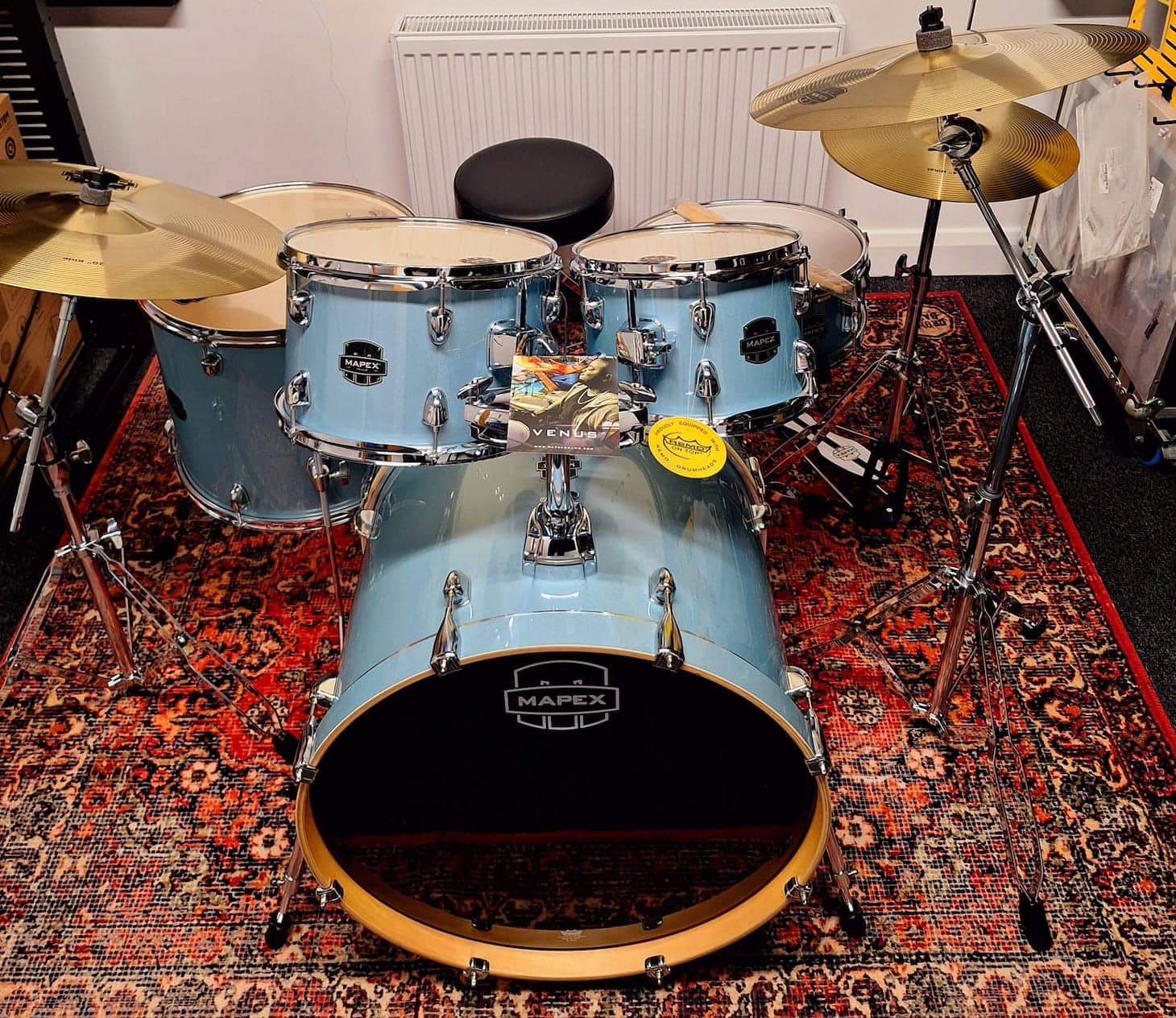
Mapex Venus kit.
The Mapex Venus 5-piece kit comes with a 16” x 20” kick drum, a 5” x 14” snare, two rack toms size 7” x 10” and 8” x 12” respectively, and a 14” x 16” floor tom. You’ll also get a kick pedal, boom stand, hi-hat stand, with an 18” crash/ride and 14” hi-hats and the T400 drum throne.
Honestly, you aren’t going to want to use the cymbals for any sort of live performance. They don’t sound great.
When playing in worship venues, I specifically choose smaller hi-hats to achieve a more controlled and tighter sound that cuts through the mix without overpowering other instruments.
After playing several gigs and recording sessions with Mapex kits, I've discovered that tuning the toms to a higher pitch not only produces better overall tone and articulation but also delivers the additional punch needed for more precise rhythmic expression.
Also, consider using Vic Firth remix brushes with this kit. Because it's a much tighter kit than many on this list, and you also might be tuning it higher still, brushes can bring out a really cool tone. Compared to playing Gretsch or PDP with brushes, the Mapex doesn't sound jazzy at all.
In fact, this is one of my favorite combinations when I play indie rock or singer-songwriter-style sets at my church. There's no limitation to genres in worship music — it's all about the lyrics and the message; the music is just a vehicle, remember that!
That's why I love playing in churches, because you end up learning and playing all styles of music — but that also means you have to be prepared and have the right tools in case a situation comes up that demands it.
The shells are constructed from 9-ply poplar wood, which while it’s not everyone's first choice it does an adequate job of producing a decent even warm tone. This is largely due to the innovation of the SONIClear edges of the shells, which allow the heads to sit flat and evenly on the shells for maximum contact and resonance.
I’d absolutely recommend changing out all the heads immediately and replacing them with thicker multi-ply heads. The stock heads are thin and do not do any favors for the kit’s sound quality.
I find Remo coated heads work great with this kit, adding a vintage vibe. When paired with the Zildjian cymbals, this kit transforms into a hybrid Gretsch-style vintage/funk kit, featuring tight decay and a warm, soft thump from the coated Remo heads.
With some better heads and dampening accessories, I believe this kit can actually do a serviceable job for a worship service. The pedal and stands are also well made and can continue to be used even if you consider upgrading from this kit in the future.
What Qualities Make a Good Drum Kit for a Worship Setting?
When considering what drum kit would best fit your Church’s worship service you should consider things like style, sound, volume, durability, and obviously price.
Sound
The first thing you should consider is the style of worship music you are playing. For example, if your Church or place of worship tends to play more contemporary worship music, you might want a kit with a bright, modern sound. A kit like the SJC Pathfinder or PDP Concept Maple Series would do well within a more modern context.
If you’re playing more classic worship songs, you might prefer a kit with a warmer, vintage sound like the Gretsch Catalina.
Keep in mind that in general, you'll want a kit that can produce an even and full tone that compliments the other instruments accompanying your music. You don’t want to overpower anyone.
Style
While not the most important feature, the aesthetic of the kit shouldn’t be overlooked.
The look won’t always affect the sound but, the way a kit looks can telegraph what sound can be expected when the kit is played.
Take for instance the classic-looking Yamaha Stage Custom kit and contrast that with something like the SJC Pathfinder.
The Pathfinder's more modern appearance suggests it would naturally fit into modern music stylings whereas the Yamaha has a style that insinuates that it’d work well with more classical or musical stylings.
Volume
While much of the time you can control volume by playing softer or using a different kinds of sticks, or heads, there are kits that are just noisier than others because of the materials they are made from.
On one hand, when playing larger venues it would be an intelligent move to find a kit that projects well and can produce the desired tone even with a soft touch. Something like the Pearl Decade Maple kit with its thinner shells could be a perfect choice.
On the other hand, if you’re playing in a smaller venue with lower ceilings, something so powerful might be a bit too much. Consider something that can be a bit tamer when played without a ton of effort.
Durability
The quality of your kit will not just affect the sound it makes but, it affects how long it will last you.
Church drum kits go through a ton of play hours sometimes from multiple players. Some players are bound to have heavier hands than others and you need a kit that can withstand the punishment it is dealt.
Consider a kit with sturdier hardware and shells that are able to handle the occasional mishap.
Price
You’ll be happy to know that every kit discussed is just at the cusp of or well under the $1,000 mark. There is no need to completely empty your wallet to get a good-sounding professional kit that can keep the beat for your congregation.
Keep in mind that most of these kits are shell packs, meaning you’ll need to purchase cymbals separately.
Most of these kits will also require a head change to sound their absolute best. So, set aside a bit of cash for some new quality heads so you or your drummer can really shine!

